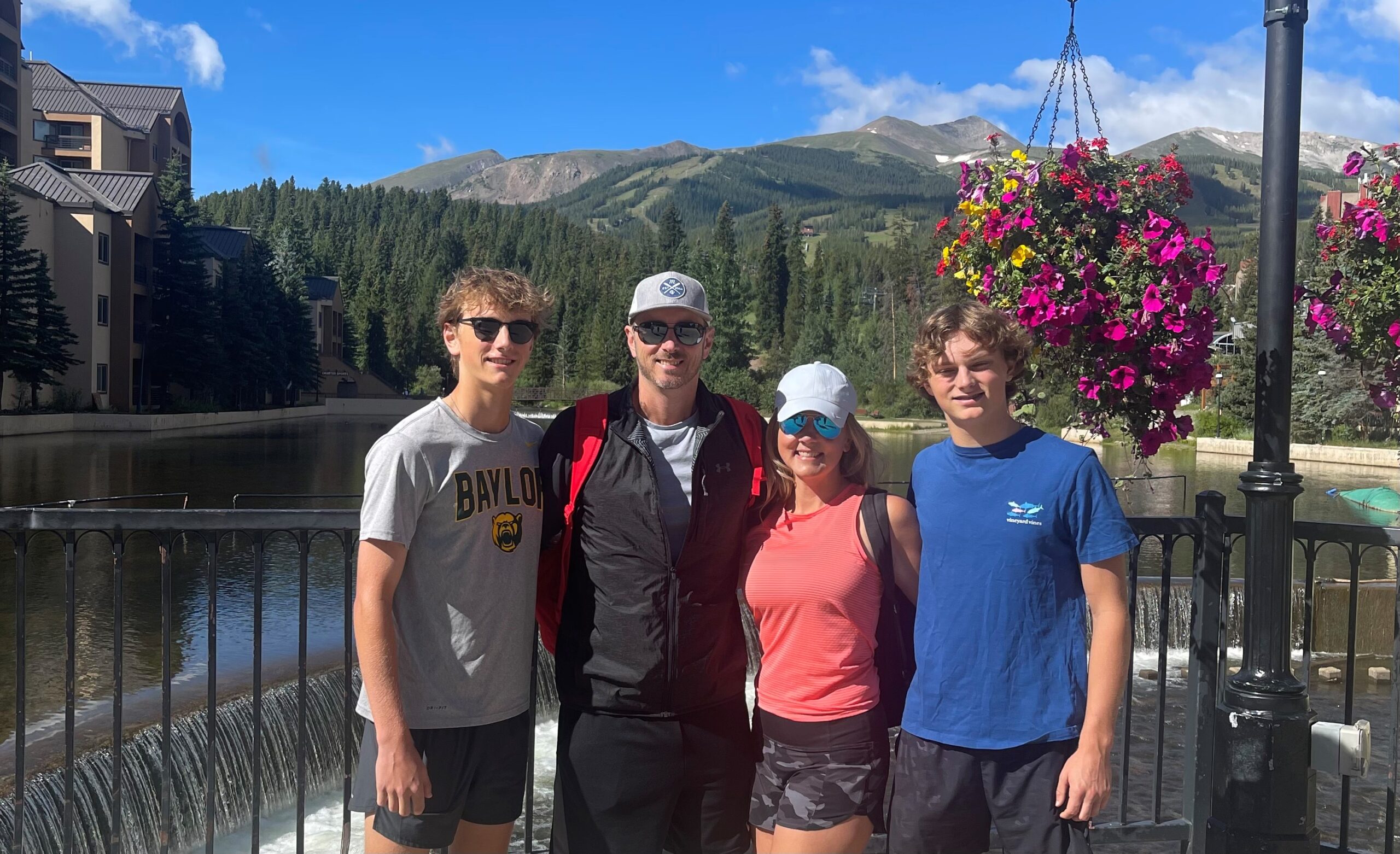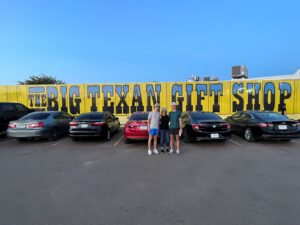
What your road trip can teach you about project success.
I recently returned from vacation. My family and I joined many of our fellow Texans in the annual summer escape from the heat and ventured to the mountains of Colorado. Sure, we could have flown, but we decided to take to the road and enjoy the freedom that comes from being in control of the journey. As we drove, the experience started to remind me of a project.
Road Trip
Day 1
The trip started out early on a Sunday morning. We were full of energy. The SUV was packed, YETIs were filled with coffee, snacks were at the ready, and teenage sons had their phones fully charged. Things were great, until they weren’t. After five hours of driving, with five more to go, my back started to hurt. My teenagers were bickering like eight-year-olds, and everyone was starving. I even heard a few “how much longer?” comments. I started having doubts…was driving the right decision? Images of the Griswold family flashed through my head.

Family photo op at the halfway point (Texas panhandle).
Fast-forward another five hours: after stops for lunch, fuel, and restroom breaks we approached our day-one Texas Panhandle destination. We made it! As we approached the highway hotel and the end of the day’s journey, I felt new energy. Sure, we weren’t in Colorado yet, our stopping point was far from glamorous, and there was more driving the next day, but we all felt a sense of accomplishment.
Day 2
We hit the road after a quick, mediocre, breakfast buffet at the hotel. The good news: the day 2 trek was only six hours; the bad news: the day 2 trek was six hours. Coming off a below-average night’s sleep in a crowded double queen room filled with road noise, I felt less than spectacular. Why did we do this again?
Fast forward…Traci (my wife) offered to do much of the driving, and I dozed off while listening to music. We made it to our high-elevation destination by mid-afternoon. The mountains were spectacular, the condo was spacious with a great view, and we were walking distance from everything we needed. After a nice walk, a couple drinks, and a casual dinner with the family, all was well. It was worth it! We did it! We were ready to enjoy a week in the mountains. We even felt confident about the drive home at the end of the week.
Projects

The incredible Rocky Mountain views.
What the heck does a road trip have to do with a project? Surprisingly, they elicit similar thoughts and reactions. Think about it. How do you feel at the beginning of a project? What about the middle? How does it feel when you hit a milestone or — even better — complete the project?
Project Beginnings
Most people are highly motivated at the beginning of a project. Sure, there is some nervous energy, but there is energy…natural energy! Leaders and team members are eager to get started and ready to take on whatever comes their way. Project leaders may even organize a kickoff event, complete with team dinner or celebration, to mark the occasion.
Change management practitioners should capitalize on the project beginning and design interventions that create even more “buzz.”
It’s a great time to seek out and engage the Innovators and Early Adopters in the organization. These people will be on board with the change and will build support from within the organization.
Project Middles
The middle is a slog. Middles are the time when people think, “Why did I sign up for this?” Project Managers and Change Managers must engineer wins to keep the team going. Maybe the project is organized in sprints. Sprints create natural milestones that team members rally around. Even better, they are often followed by “sprint retrospective” meetings to discuss what went well and what could be done better in the next sprint. Retrospectives give team members an opportunity to be heard and play a role in what happens next. This is essential to engagement, because people crave a sense of control.
Change Managers work with project managers to identify and create interim goals. We want team members to think “I was successful, and I can be successful again.” Interim goals feel more attainable than project completion. Team members are motivated when milestones or goals are met. They feel a boost.
Organizations should reward people when goals and milestones are met.
For example, “down days” (no meetings allowed), offsite events where the team completes a non-work activity together (e.g., a community service project), or spotlight awards – nominees are acknowledged and thanked by leadership and nominators are entered into a raffle for a prize.
Project Ends
Just as sprinters run a little faster at the end of the race, team members are motivated to push a little harder at the end. Natural energy abounds. Team members begin to evaluate the experience as a whole. Ends create a great opportunity to motivate through connection and impact. Are there photos of teamwork, quotes from stakeholders, events for sharing stories, or music that sums up the experience? Use them. Change and Project Managers must capitalize on desire to finish strong.
Conclusion
The element of time is powerful. Daniel Pink writes about this in his book, When. There are times when energy and motivation come naturally and times when they don’t. Change practitioners must intentionally capitalize on times of high performance and shore up points of lower performance. And travelers should plan their road trips accordingly.




